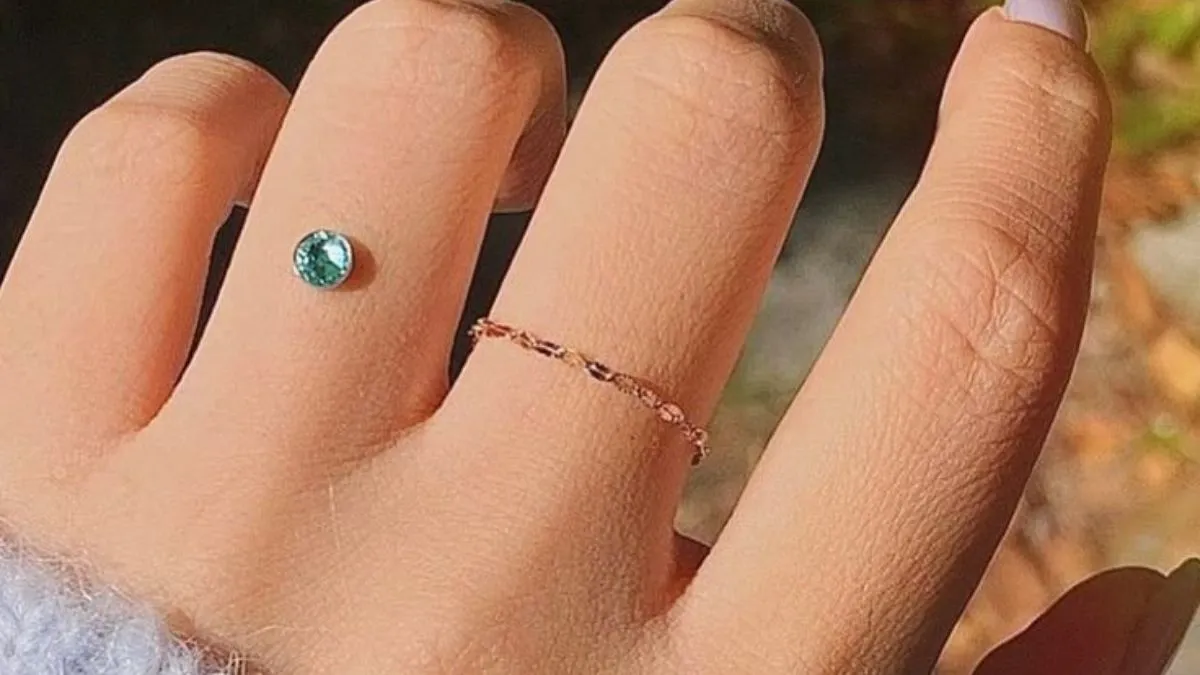Body modification is an ancient practice and piercings have always been one of the most popular means of style, culture and individuality. Although ear and nose piercing are very popular, the body art has developed into artistic choices such as finger piercing. Finger piercing is becoming popular because, similar to Spider Bite Piercing, dermals and other fashionable designs, people seek something different.
Here in this blog, we will explore all you need to know about finger piercing, its types, pricing, level of pain, advantages, and drawbacks along with some of the frequently asked questions. We will also relate it to the various kinds of piercings and how it falls within the bigger group of Types of Body Piercings.
What is Finger Piercing?
Finger piercing is a form of dermal piercing that is performed on the finger (typically on the top (between knuckles) or the side). Finger piercings are usually made with microdermal anchors or surface bars that are located under the skin unlike traditional piercings that have entry and exit points such as nose or ear piercings.
It is purely ornamental piercing that creates the impression of having a permanent ring on. Most of the people wear it instead of a piece of jewellery and some regard it as a way of expressing themselves.
Types of Finger Piercings
There are different types of finger piercings, which are distinguished by their location and method. Some common types include:
- Top Finger Piercing
- Side Finger Piercing
- Knuckle Piercing
- Dermal Finger Piercing
1. Top Finger Piercing
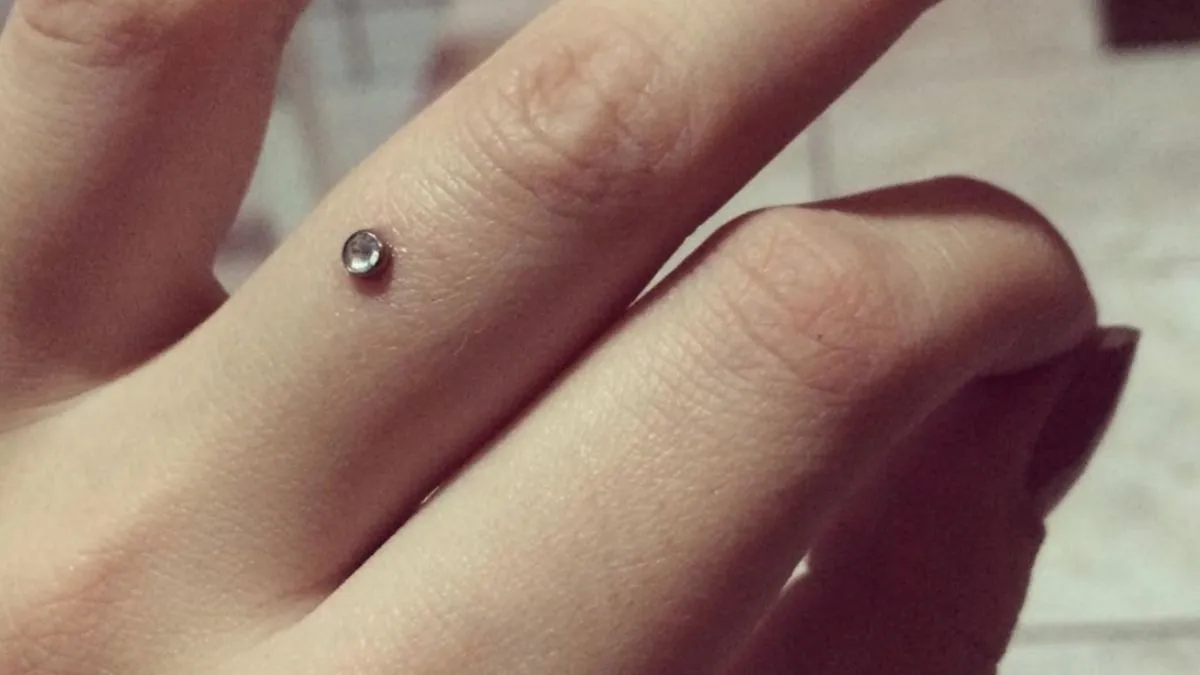
- Top finger piercing is placed on the high side of the finger close to the knuckle.
- This piercing is different and resembles a fashionable ring that does not have jewellery.
- It is known to have a modern and trendy look.
- Top finger piercing has a bold and minimalistic appearance that is preferred by people.
2. Side Finger Piercing
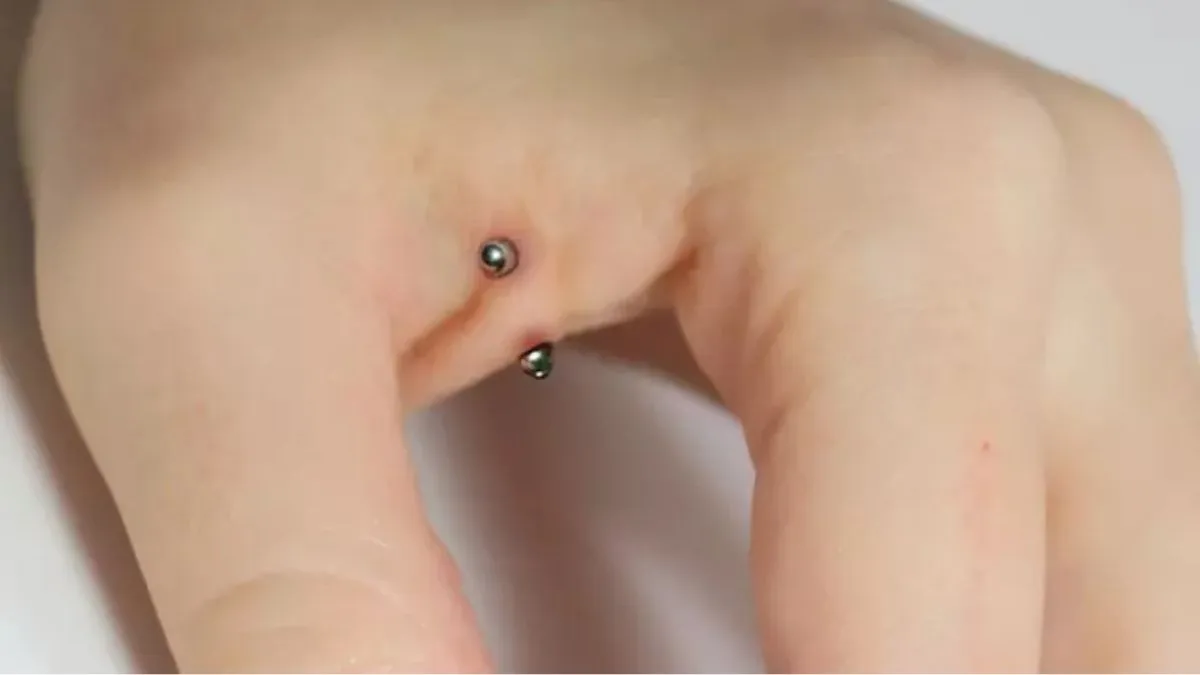
- Side finger piercing is done on the periphery of the finger.
- It provides a feminine and innovative jewellery choice.
- Couples like this piercing due to its symbolic designs.
- The side finger piercing is commonly pierced with studs or gemstones.
3. Knuckle Piercing
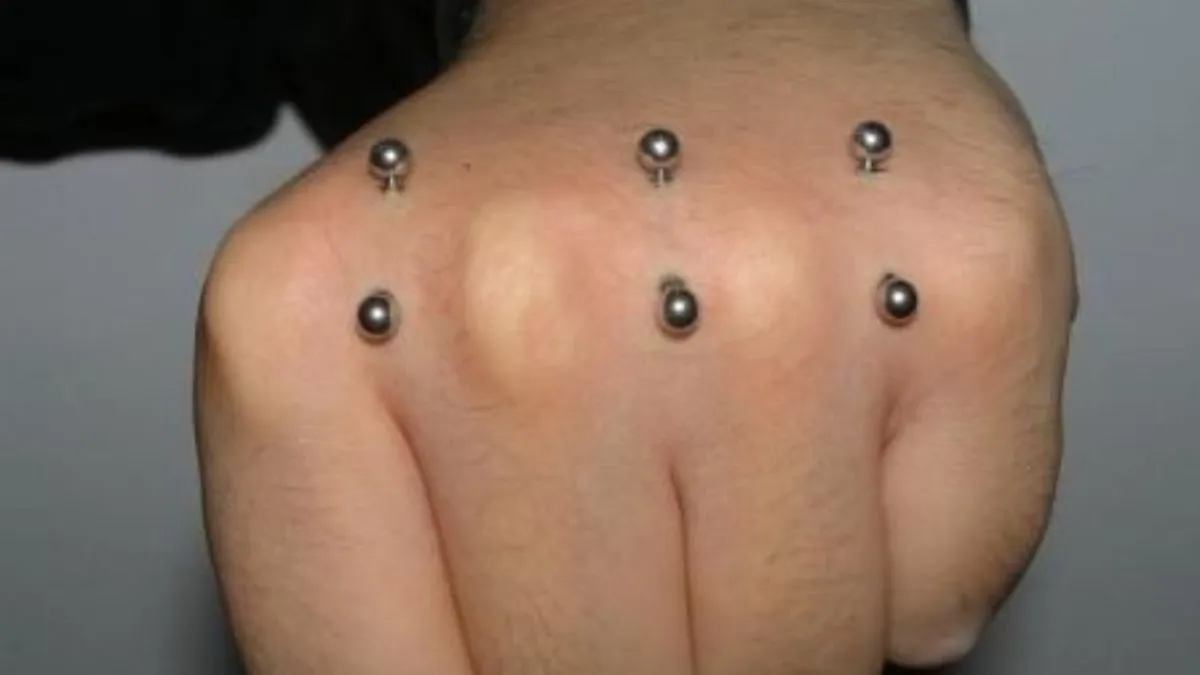
- Knuckle piercing is pierced right on the knuckle.
- It is regarded as infrequent and audacious piercing culture.
- Given that people are fond of unusual body art, this kind of style is usually preferred.
- The effect of finger movement may lead to slower healing.
4. Dermal Finger Piercing
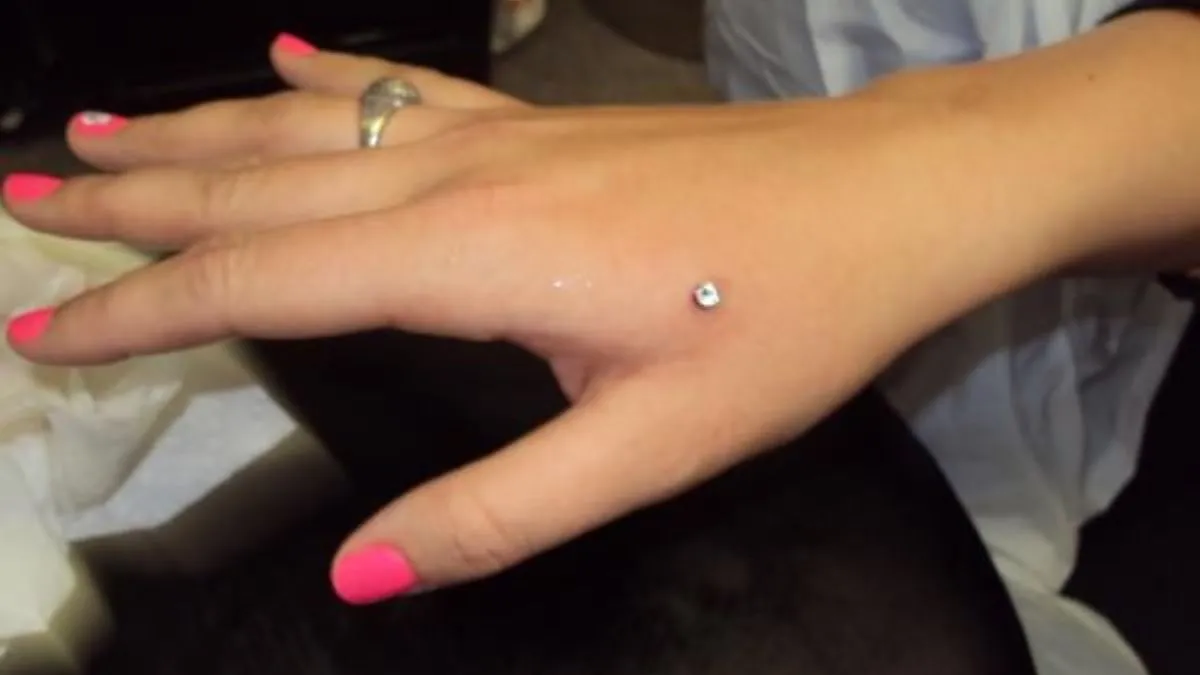
- Dermal finger piercing is a process that entails insertion of jewellery using a dermal anchor.
- It is classy because the jewellery is lying flat on the skin.
- This piercing is customizable using discs, gems or stones.
- Finger piercings are contemporary and eye catching.
Finger Piercing Cost?
Finger piercing costs will differ with the city, the reputation of the studio, and the type of jewelry.
| Location / Studio | Cost | Notes |
|---|---|---|
| India | ₹3,000 – ₹7,000 | Including surgical grade jewelry |
| USA / UK | $50 – $120 | Average price range |
| Premier Studios | Up to $200 | High-quality jewelry included |
As the finger piercings fall under the category of specialty piercing, they are not available in all the studios. Consistently verify that a professional piercer is involved with experience in the kind of body piercing before assuming.
Does Finger Piercing Hurt?
Admittedly, finger piercing is more painful than ear or nose piercing since there is less flesh and a higher number of nerve endings in the fingers.
| Factor | Details |
|---|---|
| Severity of Pain | 6–8 / 10 (varies with location) |
| Recovery Period | 6–12 weeks (may take longer if not well-attended) |
| Risk of Rejection | Higher than most piercings due to movement and friction |
Finger piercings are a little more painful when compared to piercings such as spider bite piercing or cartilage piercing.
Advantages and Disadvantages of Finger Piercings
Finger piercing has both advantages and disadvantages which are as follows.
1. Benefits of Finger Piercing
| Advantages | |
|---|---|
| Unique Design | Looks like a permanent ring without any jewellery. |
| Customisation | Wide variety of jewellery such as studs, gemstones, and flat discs. |
| Symbolism | Couples sometimes get their fingers pierced instead of wearing rings. |
| Trend Factor | A contemporary alternative to traditional ear or nose piercings. |
2. Disadvantages & Risks of Finger Piercing
| Disadvantages | |
|---|---|
| High Rejection Rate | Jewellery may fall out over time as the skin rejects the piercing. |
| Risk of Infection | Hands are constantly exposed to dirt, water, and bacteria. |
| Difficulty in Wound Healing | Excessive finger movement makes healing slower and more difficult. |
| Jewellery Getting Stuck | Rings, gloves, or daily chores can cause jewellery to snag in the piercing. |
Finger Piercing vs Other Piercings
- Finger Piercing vs Spider Bite Piercing: Spider bites are lip piercings placed close together, while finger piercings are dermal-based. Pain is higher for finger piercings, but spider bites heal faster.
- Finger Piercing vs Traditional Piercings: Unlike nose, ear, or belly button piercings, finger piercings are not permanent for most people due to rejection risks.
- Finger Piercing in Types of Body Piercings: It falls under the category of surface/dermal piercings, making it less common but more visually striking.
FAQs
Q1. How long does finger piercing last?
It depends on your body’s healing. Some last for years, while others may reject within months.
Q3. Is finger piercing safe?
If done by a professional with sterile equipment, it’s relatively safe – but risk of rejection and infection is higher than most piercings.
Q2. Can I wear normal rings with a finger piercing?
It’s not recommended, especially during healing. Jewelry can snag and cause complications.
Q4. Can couples get finger piercings instead of wedding rings?
Yes, many couples choose dermal finger piercings as a symbolic alternative.
Q5. Does insurance cover finger piercing removal if rejected?
No, piercings are cosmetic, so removal or complications are usually not covered.
